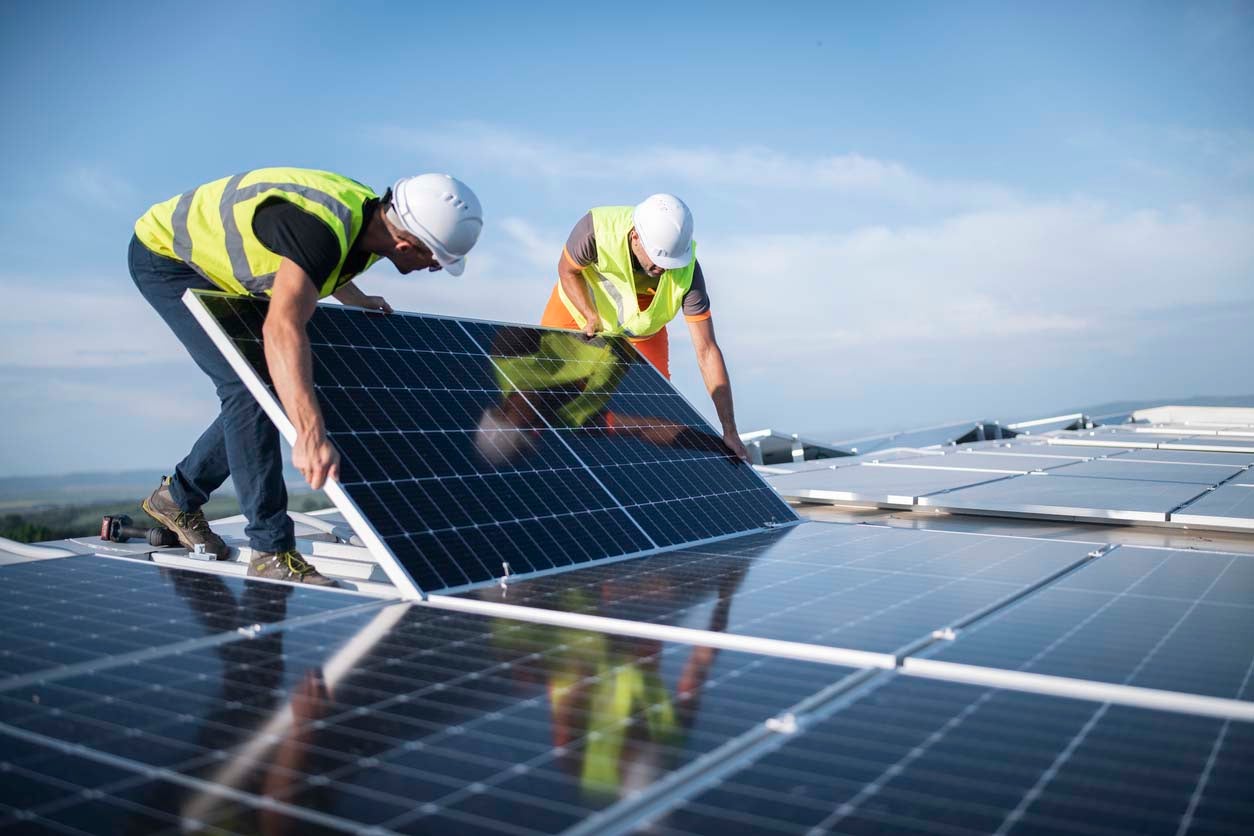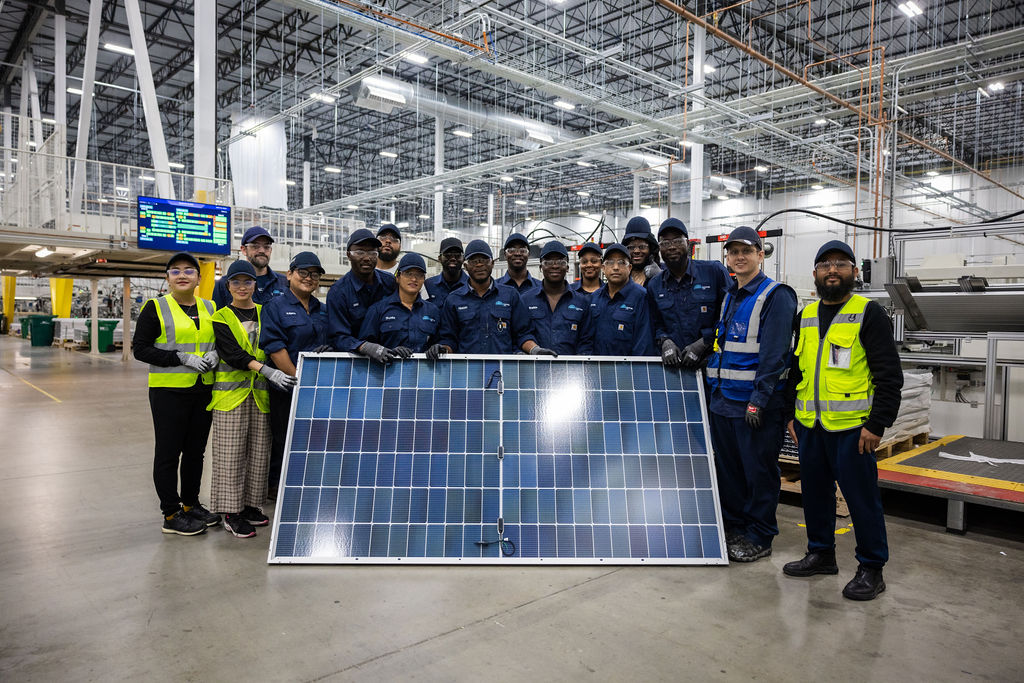The smart Trick of Solar Panel Company That Nobody is Talking About
The smart Trick of Solar Panel Company That Nobody is Talking About
Blog Article
Virginia SREC Credits: Lumina Solar Focuses On Supplying Advanced Photovoltaic Solutions For Homes And Services
History and Establishing
Have you ever questioned how a solar panel business springs from a simple spark of inspiration into a powerhouse of renewable resource? It frequently begins with a vision-- one fueled by a mix of development, determination, and a pinch of serendipity. The journey of lots of solar business mirrors the development of the technology itself: from bulky, ineffective panels to streamlined, high-efficiency marvels utilizing the sun's bounty.
The Early Days
In the late 20th century, when solar power was still a specific niche principle, leaders planted seeds for what would become a global movement. Picture a small workshop filled with curious engineers, relentlessly exploring with photovoltaic cells. Their enthusiasm was palpable, typically driven by a desire to combat environment modification and lower reliance on nonrenewable fuel sources.
One such anecdote is about a creator who, influenced by an outdoor camping trip, recognized that even in remote locations, the sun might power vital gadgets. This simple observation triggered a business's objective to democratize access to clean energy.
Founding Principles

- Development: Continually pushing the borders of solar innovation to enhance effectiveness and durability.
- Sustainability: Dedicating to environment-friendly manufacturing and lowering carbon footprints.
- Accessibility: Making renewable resource services economical and practical for daily users.
Turning points in Development
| Year | Secret Event |
|---|---|
| 1985 | Business established in a small garage, concentrating on research and advancement. |
| 1995 | First commercial photovoltaic panel item introduced, gaining local attention. |
| 2005 | Broadened to worldwide markets, embracing international renewable energy goals. |
| 2015 | Introduced cutting-edge photovoltaic panel technology with improved energy conversion. |
Isn't it remarkable how these incremental steps, often ignored, form the energy landscape today? The photovoltaic panel business story is not simply about innovation; it has to do with a relentless quest for a brighter, cleaner future.

Developments in Solar Panel Technologies
Ever discovered how some photovoltaic panels gleam brighter and last longer? It's not magic; it's the science of photovoltaic performance. Modern solar panel business invest greatly in technologies like bifacial cells, which record sunlight from both sides, enhancing energy harvest without broadening roof space. Have you ever wondered why some panels perform much better on cloudy days? That's due to advances in thin-film solar technology, which flourishes under diffused light conditions.
Item Variations Tailored to Special Needs
One size never fits all. Solar panel service providers now offer:
- Monocrystalline panels for optimum performance and streamlined looks, perfect for space-constrained roofs.
- Polycrystalline panels, which provide an affordable alternative without sacrificing too much output.
- Building-integrated photovoltaics (BIPV), merging solar tech seamlessly into architectural elements like windows and facades.
Selecting the best product isn't just about upfront cost; it has to do with matching your environment, energy objectives, and long-lasting cost savings. Homes shaded by trees require panels that stand out in low-light situations, something lots of ignore up until energy expenses climb up all of a sudden.
Technical Tips for Ideal Selection
- Evaluate the temperature coefficient-- lower worths suggest panels lose less performance on hot days.
- Look for panels with enhanced anti-reflective finishes to make the most of light absorption.
- Consider the panel's service warranty not just for problems, but for ensured power output over years.
- Don't underestimate the significance of the inverter technology matched with the panels; it can make or break your system's performance.
Beyond Panels: Emerging Patterns
Envision photovoltaic panels that adjust their angle immediately to go after the sun-- tracking systems are ending up being more accessible, increasing yield considerably. Or solar tiles that blend undetectably into your roofline, changing your home into a quiet, self-dependent power generator. These innovations are improving what a photovoltaic panel company provides-- not just products, but incorporated energy options.
Market Presence and Global Operations
Ever question why some photovoltaic panel business seem to sprout up in every corner of the world while others barely make a ripple? The distinction lies not just in innovation but in mastering the art of browsing diverse markets. Expanding globally is like planting seeds in various climates-- you need to understand each environment's special conditions to grow.
Take, for example, the detailed dance of logistics and supply chain management. Shipping panels halfway throughout the world isn't simply about range; it has to do with timing, customs, tariffs, and adapting to regional demand changes. A company with robust global operations prepares for these variables, guaranteeing panels arrive on schedule without pumping up expenses. This insight is no little task and frequently separates market leaders from fans.
Key Strategies for Expanding Market Presence
- Localized manufacturing: Developing production centers near target markets reduces shipping hold-ups and import intricacies.
- Strategic partnerships: Working together with regional companies accelerates market penetration and builds trust.
- Adaptive product design: Customizing solar panel tech to weather, sun strength, and facilities nuances boosts efficiency and acceptance.
What about the human element? Photovoltaic panel companies operating worldwide need to reconcile cultural differences and regulative nuances without losing sight of their core mission. What works in a sun-drenched desert may falter in a damp coastal area. Sometimes, the most ingenious solution is simply listening-- taking in local insights to fine-tune innovation and technique.
Specialists often recommend a phased rollout rather than a shotgun expansion. Why risk overextension when measured growth develops sustainable momentum? Scaling carefully indicates balancing aspiration with operational durability - Residential Solar Panels Virginia. After all, in the race for sustainable energy supremacy, patience can be as valuable as speed
Ecological Effect and Sustainability Practices
When photovoltaic panels initially emerged, many assumed they carried no ecological luggage. The truth is more nuanced. The production of photovoltaic cells includes unusual earth metals and energy-intensive processes, which can leave a substantial carbon footprint before the panels even reach roofs. The true environmental expense depends heavily on the sustainability practices employed by the solar panel company throughout the click here lifecycle of their products.
How often do we stop briefly to consider what happens to photovoltaic panels at the end of their helpful life? Unlike batteries or electronic devices, photovoltaic panels can last 25-30 years, however disposal and recycling pathways remain underdeveloped in numerous areas. A business dedicated to decreasing environmental damage will have a robust prepare for recycling photovoltaic products, restoring valuable silicon, glass, and metals to avoid landfill build-up.
Secret Sustainability Strategies
- Making use of low-impact manufacturing methods that reduce water and energy intake.
- Implementing closed-loop systems to recycle production waste back into new panels.
- Participating in transparent supply chain audits to make sure ethical sourcing of raw materials.
- Creating panels for easier disassembly to help future recycling efforts.
It deserves noting that some solar companies have originated ingenious methods, such as integrating biodegradable elements or utilizing less hazardous chemicals during fabrication. This not just decreases environmental stress but also sets a precedent for the industry. The concern remains: can the solar industry genuinely pivot towards a circular economy design without sacrificing efficiency or cost?
Professional Tips for Assessing Sustainability
- Ask about the company's commitment to carbon-neutral production and whether they balance out emissions.
- Examine if they partner with licensed recycling facilities dedicated to photovoltaic panel waste.
- Search for openness reports detailing environmental effects and sustainability objectives.
- Think about the durability and warranty of panels as an indirect procedure of resource effectiveness.
In the end, going with solar energy ought to suggest more than just slashing electricity expenses; it has to do with nurturing a future where energy is gathered responsibly and waste is attentively handled. Photovoltaic panel companies that welcome this philosophy not only brighten homes but likewise cast a brighter light on sustainable innovation.
Report this page